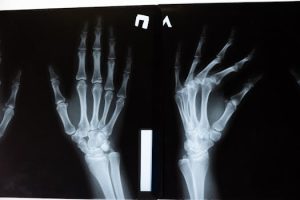Adaptive Urban Membranes: Responsive Transportation Networks
Welcome to the world of adaptive urban membranes – a technological breakthrough that is revolutionizing transportation networks in cities around the globe. This innovative approach to urban design is transforming how we move through and interact with our cities, creating responsive transportation networks that improve efficiency, sustainability, and overall quality of life. In this article, we will delve into the concept of adaptive urban membranes and how they are reshaping our cities. From the basics of what they are, to their benefits and real-life applications, let’s explore this cutting-edge technology and its potential for the future of transportation.
What are Adaptive Urban Membranes?
Adaptive urban membranes, also known as responsive urban membranes or adaptive facades, are high-tech structures that are integrated into the barriers and boundaries of a city’s transportation network. These dynamic structures are designed to adapt to changing environmental and human conditions by utilizing advanced materials and technology. They can be found in various forms, such as walls, roofs, bridges, tunnels, and other infrastructure, and function as dynamic interfaces between the urban environment and its users.
How do they work?
The key to the functionality of adaptive urban membranes lies in their ability to respond to external stimuli. These stimuli can range from temperature and air quality to traffic flow and user interaction. By using sensors, advanced materials, and intelligent systems, adaptive urban membranes can adjust their physical properties, such as opacity, permeability, and absorption, to optimize their performance and enhance the user’s experience.
For example, in a busy downtown area, an adaptive facade on a high-rise building can respond to the flow of traffic by adjusting its transparency to reduce the amount of sunlight that enters, thus minimizing the need for air conditioning and reducing energy consumption. Or on a bridge, an adaptive structure can expand or contract in response to changes in temperature, keeping the bridge stable and safe for vehicles and pedestrians. These are just a few of the many real-life applications of adaptive urban membranes in urban transportation networks.
Benefits of Adaptive Urban Membranes
The implementation of adaptive urban membranes in transportation networks offers a wide range of benefits, both for the users and the cities themselves. These benefits include:
Improved Energy Efficiency
One of the primary advantages of adaptive urban membranes is their ability to enhance energy efficiency in urban transportation networks. By optimizing their physical properties, these structures can regulate the flow of energy, reducing the need for artificial cooling and lighting, resulting in lower energy consumption and costs.
Enhanced User Experience
Adaptive urban membranes also play a critical role in enhancing the user experience in cities. By responding to external stimuli, these structures can provide a more comfortable and safer environment for users. For instance, in areas where air pollution is a problem, adaptive facades can help filter out harmful pollutants, ensuring cleaner air for pedestrians and cyclists.
Increased Sustainability
The use of adaptive urban membranes in transportation networks also leads to increased sustainability. By regulating energy consumption, reducing pollution, and creating more comfortable environments, these structures can contribute to the overall sustainability of cities and help combat environmental issues such as climate change.
Real-life Applications
Adaptive urban membranes are already making an impact in cities worldwide. Let’s take a look at some real-life applications of this technology:
Amsterdam’s Smart Bridge
In Amsterdam, a smart bridge spanning over the Oudezijds Achterburgwal canal uses an adaptive facade that opens and closes in response to the temperature, ensuring the bridge stays stable and safe for cyclists and pedestrians. The adaptive design also enhances the bridge’s energy efficiency, reducing its carbon footprint.
China’s Pearl River Night Cruise Terminal
The Pearl River Night Cruise Terminal in Guangzhou, China, features a smart facade that changes color and transparency to create a visually appealing display for passengers on the cruise ships. This adaptive membrane also regulates heat to improve energy efficiency and reduce the building’s impact on the surrounding environment.
Madrid’s Air-purifying Canopy
In Madrid, an air-purifying canopy made of titanium dioxide-coated fabric has been installed over a busy road to filter out air pollutants, improving the city’s air quality and reducing health risks for those travelling or living nearby.
The Future of Transportation Networks
Adaptive urban membranes are set to become a crucial element of future transportation networks. With their ability to adapt and respond to the changing needs of cities and their inhabitants, these structures will continue to improve energy efficiency, enhance user experience, and contribute to sustainable urban development. As technology advances, we can expect to see even more innovative and creative uses of adaptive urban membranes, transforming our cities and how we travel through them.
In conclusion, adaptive urban membranes are a game-changer in the world of transportation networks. Their ability to respond to environmental and user cues makes them an ideal solution for creating more efficient, sustainable, and user-centric cities. With their wide range of benefits and endless possibilities, the future of urban design looks brighter with adaptive urban membranes as a key component.






